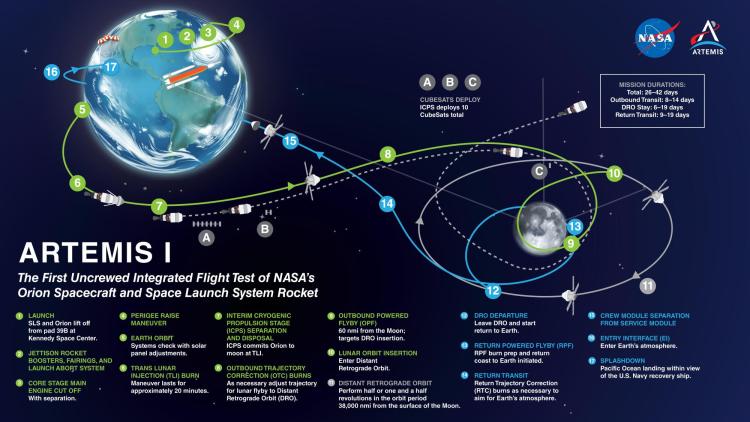A team of researchers led by CU Boulder is sending some unexpected hitchhikers to the moon: Twelve bags filled with baker's yeast (Saccharomyces cerevisiae), the same kind of hard-working cells that make bread rise and ferment beer and wine.
As early as Friday, a rocket taller than the Statue of Liberty is scheduled to blast off from a launch pad in Florida, carrying NASA's new Orion space capsule into Earth's orbit for the first time. From there, the spacecraft, designed to transport four astronauts, will begin a 42-day journey to the moon and back to Earth.
There aren't any humans aboard this mission, called Artemis 1. But that doesn't mean there won't be passengers. Three human mannequins, named Moonikin Campos, Helga and Zohar, will fly aboard Orion-as will four biological experiments, including one designed by a team at BioServe Space Technologies, a center in the Ann and H.J. Smead Department of Aerospace Engineering Sciences.
The experiment is tucked under one of the seats in a case about the size of a shoebox. Inside, millions of yeast cells will help scientists answer a critical question in space exploration: How might human bodies fare in the extreme environment of deep space, where astronauts could be exposed to the equivalent of thousands of chest X-rays' worth of radiation on every voyage.
"Nothing like this has happened for 50 years," said Tobias Niederwieser, a research associate at BioServe and an engineer on the team. "The last time humans sent anything biological on a return trip to the moon was during Apollo 17 in 1972."
But it's also just the beginning.
Artemis 1 is the first step in NASA's new era of lunar exploration. The space agency plans to launch human astronauts, including the first woman, to the moon's surface later this decade.
Researchers at BioServe are trying to keep those lunar explorers safe. Once the yeast cultures return to Earth, the team will retrieve the cells to study their DNA-and potentially find clues that could help scientists prevent or treat the effects of radiation sickness in astronauts.
Luis Zea, a former researcher at BioServe now at the Colorado-based company Sierra Space, leads the project. He said it has made him look at the moon in a new way.
"I don't see it the same," Zea said. "Because I know that Orion will be orbiting it soon with the hardware and science that we worked on for four years."







